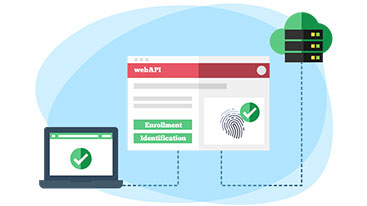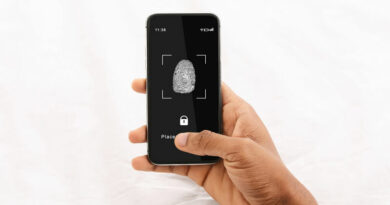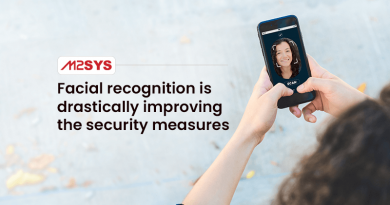Best Biometric Modality Based on their Strengths and Weaknesses
Biometric technology is used to improve the authentication and identification process in many different industries. Utilizing the unique physiological, behavioral, and morphological characteristics of an individual, it helps to identify a person in the most secure way possible worldwide.
But how do you decide which biometric modality is right for your industry? There are multiple biometric modalities are available nowadays. Which can perform the best out of the available options, bearing on mind the different industrial and environmental requirements? If you are thinking about deploying a biometric system, but getting confused about the modality to choose for your project, you are on the right track.
Different Biometric Modalities
Since ancient times, biometrics has been used to identify individuals. The fingerprint was the most popular and ancient modality of biometric. Since then, different biometric modalities have been introduced to improve identification accuracy – some of them are already in use, and some are still at their development stage. Though all of the modes of biometrics are unique in the features, there are some pros and cons of each modality according to the specific project type, user type, and environment. On the basis of these factors, the best biometric modality can be easily selected for any particular project. Let’s have a look at the differentiators to choose the best biometric modality:
| Factors |
Fingerprint |
Finger Vein | Iris | Facial |
| FAR & FRR | High | Low | Lowest | Highest |
| Accuracy | Low | High | Highest | Lowest |
| Template Size | Lowest | Low | High | Highest |
| Cost | Lowest | High | Highest | Low |
| Security | Low | High | Highest | Lowest |
| Long Term Stability | Low | High | Highest | Lowest |
| Environment Adaptability | Lowest | High | Highest | Low |
| Duplication Risk | Highest | Low | Lowest | High |
| Processing Speed | High | Low | Highest | Lowest |
| User Friendliness | High | Low | Lowest | Highest |
1. False Acceptance Rate (FAR) & False Rejection Rate (FRR)
FAR is the frequency of acceptance of a wrong template that doesn’t exactly match the sample template, and FRR is the rate at which the system mistakenly rejects the exact biometric template. In both cases, it is considered as the error rate or limitation of the technology. Though the rate is very low for most biometric modalities, it leaves the possibility of a mistake. So, it is always better to select a biometric modality that has the lowest FAR and FRR value.
2. Accuracy
The lower the FAR and FRR, the higher will be the accuracy in the case of biometric identification. So, ultimately you should select whatever modality provides the most accurate data. For example, Shannon Power Management, based in Ireland and Australia, got tired of buddy punching and employee time theft. They were looking for an accurate way to track attendance information and finally went for finger vein biometrics from M2SYS for its lower FAR and FRR rate compared to fingerprints. As a result, they controlled payroll costs by eliminating the practice of buddy punching and time theft.
3. Template Size
Size does matter in the world of technology. The different templates extracted from different biometric modalities require different space for them to be stored. The modality should be selected considering the project size, the number of enrollments and infrastructure.
4. Cost
All of the biometrics capture tools do not provide the same features, nor the same price. In addition, the cost of maintaining these features over the lifetime of the project should also be considered before deploying a biometric project.
5. Security
Some means of biometrics are easy to use or forge, and some are troublesome. The modality which reflects the security level required by your project should be selected. For example, patient safety is one of the most important initiatives at Novant. Just like many other major healthcare institutions, the volume and diversity of patients seen at their facilities made it difficult to rely on traditional protocols to ensure patient identification accuracy. After carefully evaluating several biometric patient identification technologies, Novant chose to deploy the RightPatient® patient identification solution in all of their hospitals, using iris biometrics.
6. Long-term Stability
Though all of the biometrics are unique in their features, sometimes the uniqueness slightly changes over time. The best option is to select such a modality which remains the same throughout the life cycle of an individual.
7. Environment Adaptability
The environment is one of the most differentiating factors in choosing biometric modality. For example, if the project is to identify mine workers where people work bare-handed, fingerprints might not work properly due to dust. So, you should consider the environment of the project and use the best modality for efficiency.
8. Duplication Risk
It has been said that biometrics are almost impossible to be forged. However, in extreme cases, some biometric data could be replicated. So, if the project requires high security and has the threat of being affected by duplicate identity, it is important for this to be considered prior to selection.
9. Processing Speed
Identification (1:N) and authentication (1:1), both require time to perform from the stored template. Different biometric modalities create and match the template in different algorithms which require different time to match or verify.
10. User Friendliness
Did you ever think about the users of your biometric project? You definitely need to think about the users’ experience and choose the best biometric modality for your project. For example, Dan’s Technology was looking for a biometric image capture solution for one of their clients from the micro-finance vertical. Their client was an NGO who wanted to capture their loan account holders’ fingerprint images for administrative purposes and to verify their identities for future verification to prevent fraudulent activities. They decided to adopt the Bio-Plugin image capture solution with M2-EasyScan fingerprint reader for the NGO, considering its user-friendliness and the familiarity of their customer with the modality.













